April - Early May 2011
We had a productive April as many Neotropical migrants returned early to the banding area. We recorded record early capture days for several species including Black-throated Blue Warbler, Tennessee Warbler, Wilson's Warbler, Gray Catbird, and Least Flycatcher. This delighted our beginner workshop participants who were learning about bird banding during the last week of April.
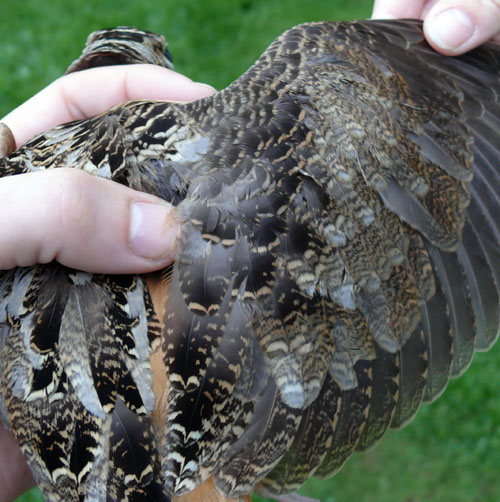
This was the only American Woodcock banded this spring, and it was identified as a SY by the clear molt limit among the wing coverts.
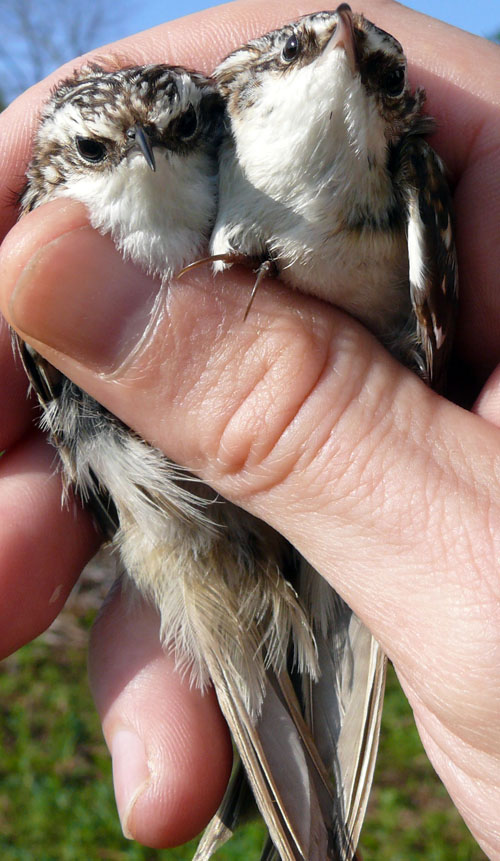
The only 2 Brown Creepers banded so far this year were captured in the same net.
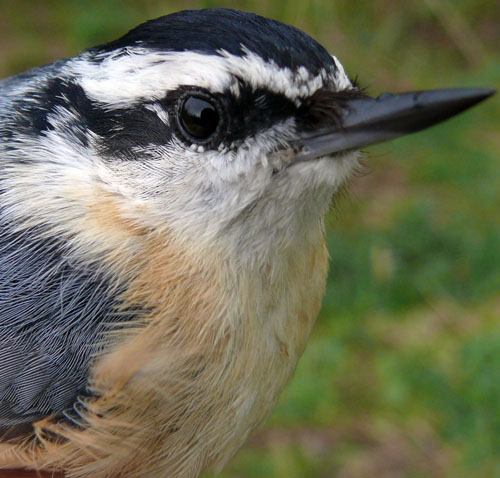
We banded a single Red-breasted Nuthatch, a species that is often missed during spring migration at Powdermill.
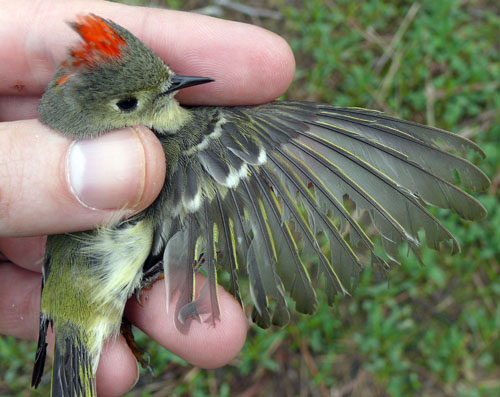
Extreme wear among the flight feathers of this male Ruby-crowned Kinglet. This somewhat strange pattern of feather wear may have been the result of feather mites. Unfortunately for this bird, it will have to live with these damaged feather until the prebasic molt following breeding.t Powdermill.
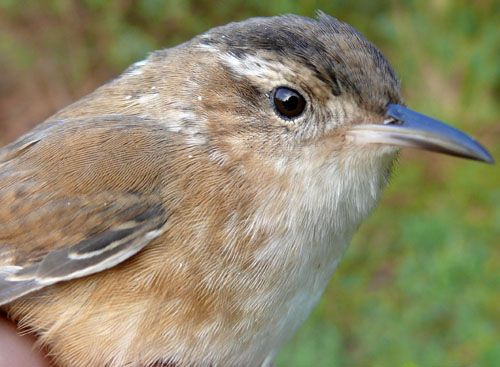
A rather drab Marsh Wren.

A female Prairie Warbler was a nice April surprise.
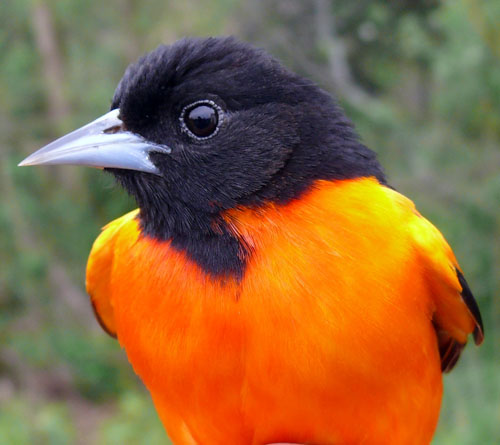
ASY male Baltimore Oriole
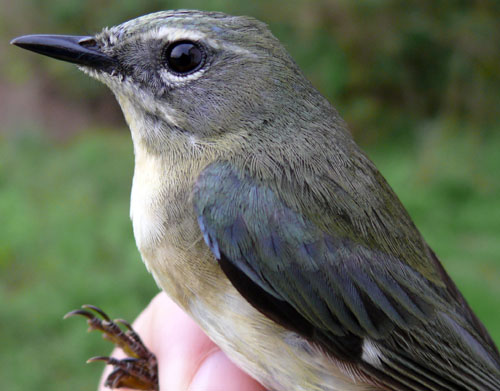
ASY female Black-throated Blue Warbler. Plumage color can be very helpful in ageing birds and along with other characteristics (molt limits) can be used to help with age and sex determinations. The amount of blue on this female certainly suggests that she is an ASY bird.
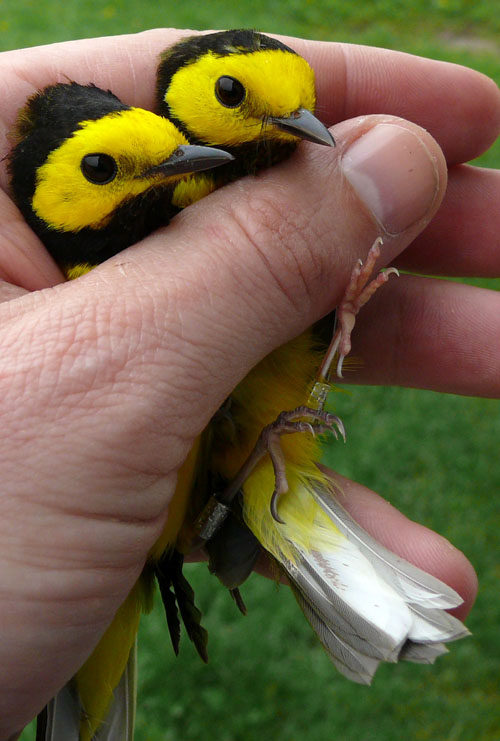
Similar to some other warblers, there can be a lot of variation in the plumage of female Hooded Warblers. HY/SY females frequently lack any black in the hood, and older females may have an extensive hood that resembles that of a typical male. The bird on the left is a SY male and the one on the right is an ASY female (based on the lack of molt limits, a not quite complete hood with a lot of yellow flecking, and a very small wing chord).
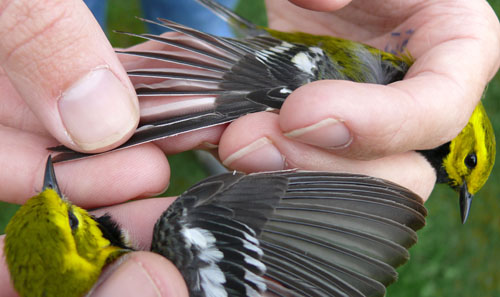
The best way to age songbirds during the spring/summer is by examining their wing feathers for the presence/absence of molt limits.
The Black-throated Green Warbler at the top of the image is an ASY male and the bottom one is an SY male. The adult lacks a molt limit among the alula feathers (all replaced during the prebasic molt), while the SY bird replaced its A1 (alula covert) and CC (carpal covert) but not the A2 or A3 feathers. Although this molt limit is subtle in the picture it comes out better in direct sunlight! Also, notice the white spot on the A2 feather of the adult bird. We have noticed that this is a common pattern for adult BTNWs.
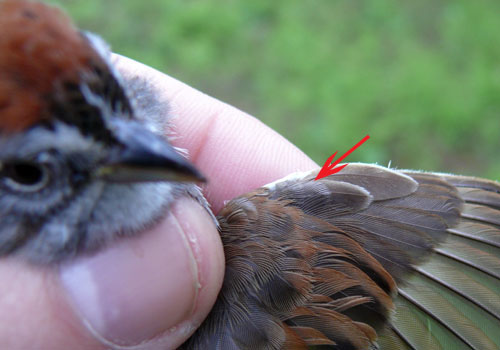
Swamp Sparrows show the same pattern as warblers and SY birds generally have a replaced A1 and CC but not A2 and A3. The arrow identifies the replaced A1 which lays on top of A2 and A3 (retained).
Be cautious with sparrows as the alula molt limit can be very subtle and difficult to detect (the limit on this bird is more obvious than most sparrows).

Be careful, though, as not all birds are the same. Look how worn and light brown the A1 feather is on this bird. This is a SY Swamp Sparrow that did not replace any alula feathers during the prebasic molt, but it did replace the CC (carpal covert). Almost all warblers, vireos, and sparrows replace the CC during the 1st prebasic molt.
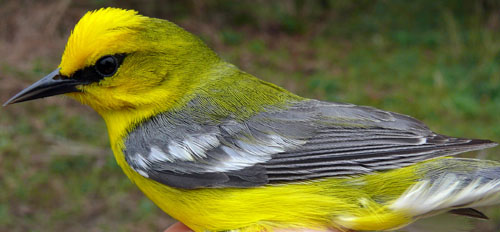
ASY male Blue-winged Warbler.
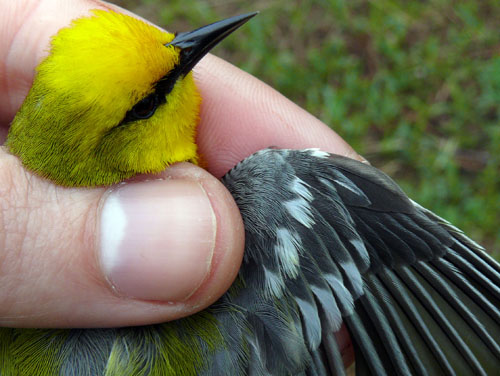
Look how dark and colorful the A2 and A3 (although the A3 is always a little duller with less edging) are on this ASY male Blue-winged Warbler.
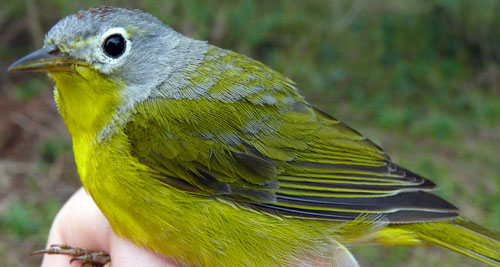
An ASY male Nashville Warbler.
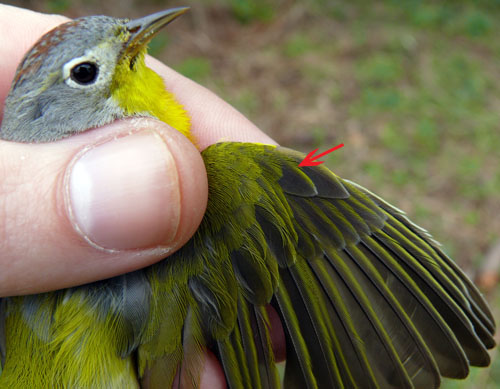
Again, notice the lack of a molt limit on this bird. The arrow is pointing to a dark/colorful A2 that was replaced during the complete prebasic molt undertaken by the adult bird the previous summer. So, it is an ASY male.
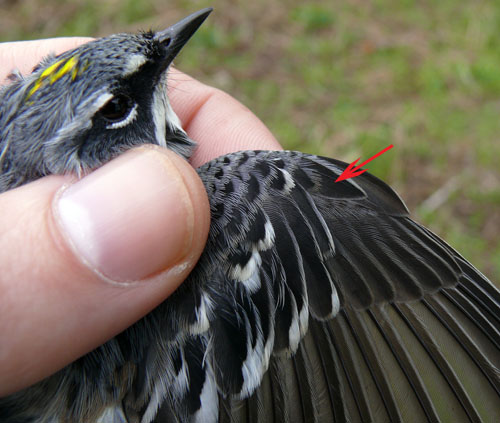
This ASY male Yellow-rumped Warbler shows the same pattern as the above Nashville Warbler. In addition to looking at the alula feathers and the carpal covert, notice the strong edging and rounded tips to the primary coverts. With that said, we advise caution when using primary covert shape to age birds. We frequently see adult birds with pointed primary coverts and young birds with rounded primary covert tips!
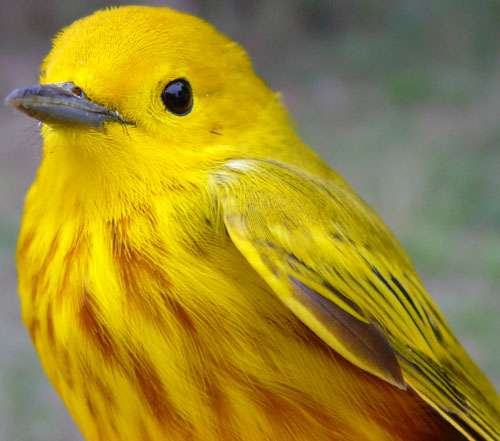
An ASY male Yellow Warbler. Although the wing is folded, the dark centers and strong edging of the alula feathers and primary coverts quickly identify this individual as an adult.
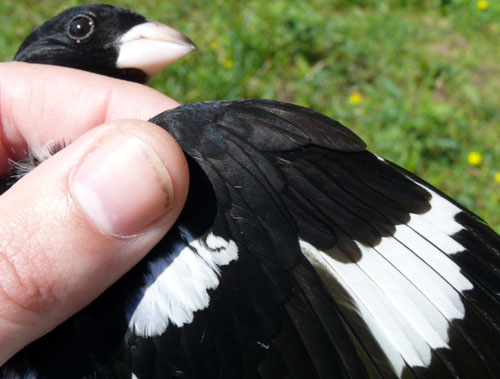
Male grosbeaks, buntings, and tanagers are very easy to age using molt limits and provide good examples for the novice. This bird is a typical example of an ASY male with black alula feathers, primary coverts, and flight feather. Additionally, the white wing patch is very large on this bird.
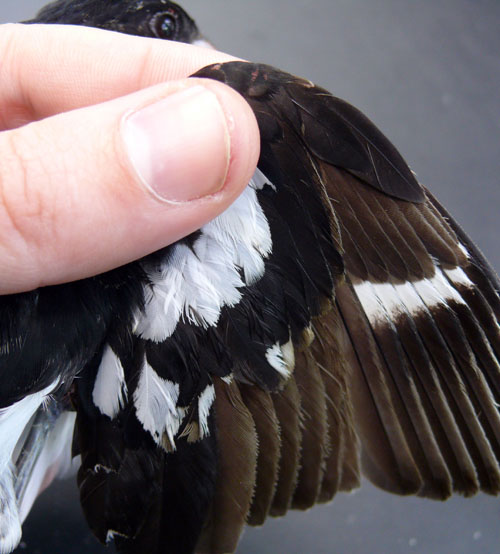
Now compare the above photo with this one of a SY male grosbeak. Young grosbeaks can replace all of their alula feathers (as this one did), but notice the strong contrast between feathers replaced during the 1st prebasic molt and the retained juvenile feathers (primary coverts and all flight feathers except the tertials).
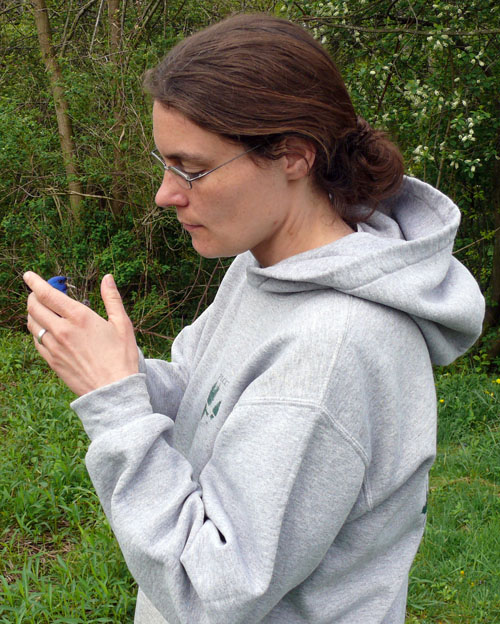
A spring workshop participant getting ready to release a male Indigo Bunting.
People come to Powdermill each year to take our Banding Workshops to develop their banding skills and learn about the intricacies of ageing and sexing songbirds. If you are interested in learning more about our workshops please contact PARC at 724-593-7521.
